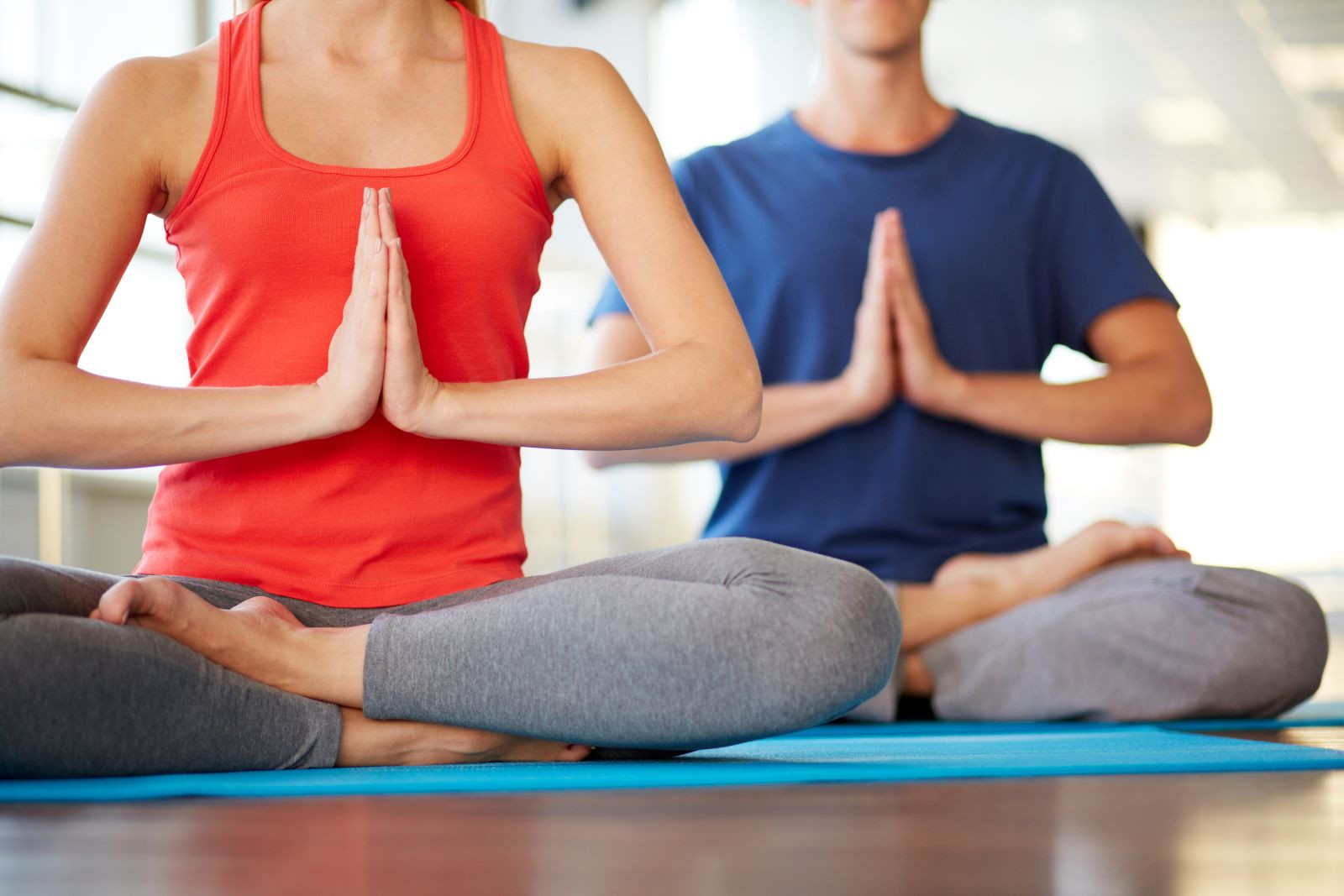Imagine waking up to a morning where your mind feels clear, your body is energized, and your heart is at peace. For millions worldwide, yoga and meditation make this a reality. These ancient practices, rooted in centuries-old traditions, have surged in popularity, promising physical vitality, mental clarity, and emotional balance. But what exactly makes yoga and meditation so transformative? Let’s dive into their profound benefits, weaving together science, personal stories, and practical insights to help you understand why they’re worth your time.
What Are Yoga and Meditation?
Yoga and meditation are mind-body practices originating in ancient India, designed to harmonize the body, mind, and spirit. Yoga combines physical postures (asanas), breath control (pranayama), and meditation to promote holistic wellness. Meditation, on the other hand, focuses on cultivating mindfulness and mental stillness, often through techniques like focused breathing or guided visualization.
These practices aren’t just for flexible folks in leggings or monks in serene retreats—they’re for anyone seeking balance in a chaotic world. From stressed-out professionals to curious beginners, yoga and meditation offer something universal: a chance to reconnect with yourself.
Physical Benefits of Yoga
Improved Flexibility and Strength
Yoga’s physical postures stretch and strengthen muscles, improving flexibility over time. Regular practice can transform stiff joints into fluid, graceful movements, making daily activities like bending or lifting easier.
I remember my first yoga class—my hamstrings screamed during a simple forward fold. But after a few weeks, I could touch my toes without wincing. Studies show yoga increases flexibility by up to 35% in just eight weeks, proving it’s not just for the naturally bendy.
Enhanced Posture and Balance
Slouching at a desk all day? Yoga can help. Poses like Mountain Pose or Tree Pose strengthen core muscles and improve spinal alignment, reducing back pain and enhancing balance.
A friend of mine, a graphic designer, swore yoga fixed her chronic neck pain from hours hunched over a laptop. Research backs this: a 2021 study found yoga reduced lower back pain by 42% in participants after 12 weeks.
Boosted Cardiovascular Health
Certain yoga styles, like Vinyasa or Ashtanga, get your heart pumping, improving circulation and lowering blood pressure. Meditation complements this by reducing stress hormones like cortisol, which strain the heart.
A 2023 study showed that yoga practitioners had a 15% lower risk of heart disease compared to non-practitioners. Who knew a downward dog could be a heart-saver?
Mental and Emotional Benefits of Meditation
Stress Reduction
Meditation is like a mental reset button. By focusing on the breath or a mantra, you calm the mind’s chatter, lowering stress levels. Techniques like mindfulness meditation teach you to observe thoughts without judgment, creating a sense of calm.
After a tough breakup, I turned to meditation to quiet my racing thoughts. Ten minutes a day of guided breathing helped me sleep better and feel less overwhelmed. Science agrees: meditation can reduce cortisol levels by up to 25%.
Improved Focus and Concentration
In a world of endless notifications, meditation sharpens your attention. Practices like focused-attention meditation train your brain to stay present, boosting productivity and mental clarity.
A colleague who meditates daily swears it’s why she nails deadlines without panic. Studies confirm meditation can improve attention span by 20% in just four weeks.
Emotional Resilience
Meditation fosters emotional stability by helping you process feelings constructively. It’s like building a mental muscle for handling life’s ups and downs.
When my cousin lost her job, she used meditation to stay grounded. She said it helped her see challenges as temporary, not defining. Research shows meditation increases resilience, with practitioners reporting 30% less anxiety.
How Yoga and Meditation Work Together
A Synergistic Approach
Yoga and meditation are like peanut butter and jelly—great alone, but magical together. Yoga prepares the body for meditation by releasing physical tension, while meditation deepens yoga’s mental benefits, creating a holistic practice.
My yoga teacher always ends class with a five-minute meditation, and it’s the most grounding part of my week. This combo enhances both physical and mental outcomes, with studies showing a 40% greater stress reduction when practiced together.
Building Mind-Body Connection
The interplay of yoga’s movement and meditation’s stillness strengthens the mind-body connection, fostering interoceptive awareness (your ability to sense internal bodily states). This leads to better self-regulation and emotional health.
I once struggled to notice when stress was building up. Yoga and meditation taught me to tune into my body’s signals, like a tight chest or shallow breath, helping me act before stress spirals.
Comparing Yoga and Meditation
| Aspect | Yoga | Meditation |
|---|---|---|
| Primary Focus | Physical movement + mental focus | Mental stillness + mindfulness |
| Key Benefits | Flexibility, strength, balance | Stress relief, focus, emotional health |
| Time Commitment | 20–60 minutes per session | 5–30 minutes per session |
| Best For | Physical fitness + mental clarity | Mental health + emotional resilience |
| Accessibility | Requires space for movement | Can be done anywhere |
Both practices complement each other, but yoga is ideal if you want a physical workout, while meditation suits those seeking quick mental relief. Combining them offers the best of both worlds.
Pros and Cons of Yoga and Meditation
Pros
- Yoga: Improves physical health, reduces pain, boosts mood, accessible to all levels.
- Meditation: Enhances mental clarity, reduces anxiety, requires minimal time, portable.
- Both: Scientifically backed, customizable, promote long-term well-being.
Cons
- Yoga: May require guidance to avoid injury, needs space/equipment, time-intensive.
- Meditation: Can feel challenging for beginners, requires consistency, may not suit restless minds.
- Both: Results take time, may not appeal to everyone.
Despite these cons, the benefits far outweigh the challenges, especially with proper guidance and patience.
Where to Start with Yoga and Meditation
Finding Classes or Resources
New to yoga or meditation? Local studios, online platforms, or apps are great starting points. Studios like CorePower Yoga or Unplug Meditation offer beginner-friendly classes, while apps like Headspace or Calm provide guided sessions.
I started with a free YouTube yoga class and a Headspace trial—both were gentle introductions that didn’t break the bank. Look for local studios via Google Maps or try apps for on-demand access.
Best Tools for Practice
- Yoga Mats: A non-slip mat (e.g., Lululemon or Manduka) ensures safety and comfort.
- Meditation Apps: Headspace, Calm, or Insight Timer offer guided meditations for all levels.
- Props: Blocks, straps, or cushions make yoga accessible and meditation comfortable.
- Online Courses: Platforms like Glo or YogaWorks provide structured learning for beginners.
Investing in a good mat and a free app trial can kickstart your journey without overwhelming you.
People Also Ask (PAA)
What are the health benefits of yoga and meditation?
Yoga improves flexibility, strength, and heart health, while meditation reduces stress, enhances focus, and boosts emotional resilience. Together, they promote holistic wellness, with studies showing up to 40% stress reduction.
Can beginners do yoga and meditation?
Absolutely! Start with beginner-friendly yoga styles like Hatha or guided meditations on apps like Calm. Both are customizable, and instructors or apps can guide you step-by-step.
How often should I practice yoga and meditation?
Aim for 3–5 yoga sessions (20–60 minutes) and daily meditation (5–20 minutes) per week. Consistency matters more than duration—start small and build up.
Are there risks to yoga or meditation?
Yoga can cause injury if done incorrectly, so follow trained instructors. Meditation may bring up uncomfortable emotions for some; a guide can help navigate this. Always consult a doctor if you have health concerns.
Practical Tips to Get Started
- Set a Routine: Practice at the same time daily, like morning yoga or evening meditation.
- Start Small: Try 10-minute sessions to build confidence without overwhelm.
- Join a Community: Local studios or online forums foster motivation and connection.
- Track Progress: Journal how you feel after sessions to stay committed.
- Be Patient: Benefits deepen over time, so don’t expect instant miracles.
I found that scheduling 15 minutes of yoga before breakfast made it a habit. Joining a local meditation group also kept me accountable—it’s like having gym buddies for your mind.
FAQ Section
How do yoga and meditation improve mental health?
They reduce stress hormones, enhance focus, and build emotional resilience. Meditation calms the mind, while yoga’s physicality releases tension, with studies showing a 30% anxiety reduction.
Can I practice yoga and meditation at home?
Yes! Use apps like Headspace or YouTube tutorials for guided sessions. A quiet space and basic props like a mat or cushion are all you need.
What’s the best time to practice?
Morning sessions energize you, while evening practices promote relaxation. Choose what fits your schedule—consistency is key.
Do I need to be flexible to do yoga?
No! Yoga improves flexibility over time. Start with gentle poses like Child’s Pose, and your body will adapt with practice.
Are online classes as effective as in-person?
Online classes are highly effective, especially with platforms like Glo or YogaWorks offering expert guidance. In-person classes add community, but both work well.
Why Yoga and Meditation Are Worth It
Yoga and meditation aren’t just trends—they’re time-tested tools for a healthier, happier life. Whether you’re stretching into a warrior pose or breathing through a guided meditation, these practices offer tangible benefits backed by science and personal experience. They’re accessible, adaptable, and deeply rewarding, whether you’re a beginner or a seasoned practitioner.
Ready to roll out a mat or find a quiet corner? Start small, explore local studios or apps, and let these practices transform your body and mind. As someone who’s felt the shift from stress to serenity, I can say it’s worth every breath.









Leave a Reply